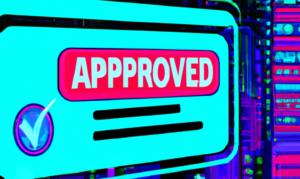Each year, approximately one trillion dollars’ worth of mortgages are lent out to millions of homeowners. Every single one of these borrowers goes through the same mortgage lending process to get pre-qualified, pre-approved, and finally approved.
But what is the difference between these three stages of the mortgage lending process, and what does each one mean for you? Let us look at exactly what you can expect during each stage.
Pre-Qualification Defined
Pre-qualification is the first step in the mortgage process. During this initial stage, you speak with a lender or broker to learn if you would qualify for a mortgage loan and, if so, how much you may qualify for and at what interest rate. You will need to supply your personal information, such as your estimated credit, income, and assets. However, nothing will be verified just yet—no credit check will be performed, and no documents need to be sent to or signed from the lender.
This process can be done in person, over the phone, or over the internet, at no cost to you. A complete loan application is not required.
Why Is Pre-Qualification Important?
Pre-qualification costs you nothing other than time spent researching mortgage rates online or speaking with a mortgage broker. Additionally, it gives you a general idea of what options are available to you and whether it is worth attempting to get approved for a mortgage loan.
While a pre-qualification is nothing more than a conversation, be sure to provide your mortgage broker as much accurate information as possible so you walk away with a realistic understanding of whether pursuing a loan is worth your time. Be sure to disclose the following information:
- Income for all borrowers (rental, alimony, and child support income apply)
- Realistic value of your property (if you are refinancing), or the property you are buying
- List of all credit card, student loan, car, and other financial obligations (basic expenses such as groceries, cell phone bills, and health insurance do not apply)
- Whether you have any delinquent accounts, debt in collections, or taxes owed
- A realistic estimate of what your credit score and report may look like
- Whether you have had any bankruptcies, foreclosures, or short sales in the past 10 years
With this information, your lender or broker should be able to tell you whether there are loan options for you and, if so, what those terms may look like
Pre-Approval Defined
Pre-approval is the second step in the mortgage process and can be done in person, over the phone, or over the internet.
Beyond simply providing your personal information to the lender, you will also be required to complete a full loan application and authorize a credit report to be run. Additionally, you will likely be required to submit additional documentation, which may include the following:
- Last two years of income tax returns
- Your most recent W-2 Statement
- 3–6 months of bank statements
- Your most recent paycheck stubs
- Homeowners insurance declarations page (if you are refinancing)
- Recent mortgage statement (if you are refinancing)
- Documentation on any assets or investments you own
Depending on the lender and loan type, other types of documentation may be requested before they are able to provide you with a pre-approval. A loan officer performs this step, not an underwriter. Note that completing the pre-approval process for you is not an actual commitment to lend you anything.
Most lenders should not charge you out of pocket for a credit check at this point, as it is customary to hold off on this charge until the closing of your loan.
Why Is Pre-Approval Important?
Pre-approval means that your lender has agreed to lend you their money and you have met nearly all their requirements. If you choose to take the next step with the lender, you will have to sign an intent to proceed and pay for an appraisal upfront.
At this point, if you are a homebuyer, you can request a pre-approval letter, which outlines the lender’s conditional commitment based on the documents you have provided. You will want to include this letter in any future purchase offers. This will differentiate you from other purchase offers that do not have a pre-approval letter and may improve your chances of the seller choosing you.
Additionally, during this step, your lender will be able to lock-in your qualified rate and program. This simply means that they will choose a mortgage rate and program that will not change over the next 30 days, even if rates change in the market.
Approval Defined
Approval is the third step in the mortgage process and can be done in person, over the phone, or over the internet. By the time you reach this step, you will have already provided your basic personal information, your credit report will have been run, and you will have submitted all supporting documentation to the lender. Now, an underwriter will closely review and verify the documents you provided and determine if you meet all the requirements necessary to proceed with the funding process, where the lender takes the final steps prior to releasing the funds from the loan to you. The underwriter will issue a formal decision at the end of this process; your loan can either be approved, suspended, or denied.
If Your Application Is “Suspended”:
This means the lender will need to receive and verify additional documentation before resuming with the approval process. This may occur for several reasons, such as if copies of documents are not legible, pages and signatures are missing, or certain documents are outdated.
If Your Application Is “Denied”:
This means the lender cannot fund your loan and the process stops. This can occur for several reasons, such as if the appraisal value is much lower than expected, your credit report and scores substantially change for the worst, or certain documents are submitted after the required deadlines or not submitted at all. When this occurs, you will need to search for a new lender that can accommodate the new scenario and re-submit your loan package. Your mortgage broker will help you with this.
Why Is Approval Important?
Approval means your loan will proceed to the funding process. Most of the work has been completed, and just a few more administrative tasks remain before the lender can release the money.
During the mortgage approval process, your credit may be verified a second time to make sure there are no changes that negatively impact your qualification from the time your loan application was originally received by the lender. Additionally, you may be asked to verify your income again and provide a current set of bank statements. It is especially important that communication be clear, and any required documents be sent in immediately to avoid delays or rejections.
Summary
By understanding the mortgage process, you will know exactly where you are and how much work remains before you are approved. To recap, there are three major steps before your loan is ready to be funded by the lender and the money is authorized to be released:
- A pre-qualificationwill tell you whether there are any loans available to you and help you decide if it is worth your time trying to get approved.
- A pre-approval means that the lender has accepted your loan and that you have met nearly all their requirements. At this stage, you can request a pre-approval letter, lock-in your loan, and take the next step to proceed with loan.
- An approval means your loan was reviewed and approved by an underwriter and has been authorized to begin the closing and funding process.






